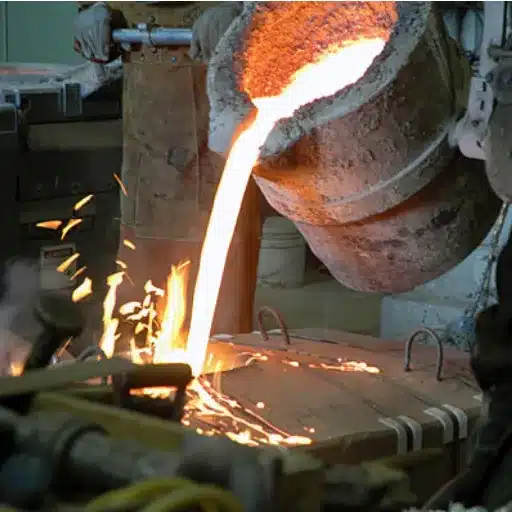Sanitary filters are essential in production processes where hygiene, safety, and efficiency are critical. Manufacturing processes in pharmaceutical production and food and beverage processing require purity at every step. This ultimate guide sheds light on the indispensable 3-A sanitary stainless steel filter housing solutions, which are among the most trusted in observing necessary quality and sanitation regulations. We will discuss each step of the journey, whether you are planning a new filtration system or refining an existing one. Every step covered here will put you in a better place for decision-making. These articles delve into the subjects related to the filters, such as their configuring features, merits, usages, and examination of adherence to the governing rules while improving effectiveness and efficiency.
What Is a Sanitary Filter and Why Is It Important?
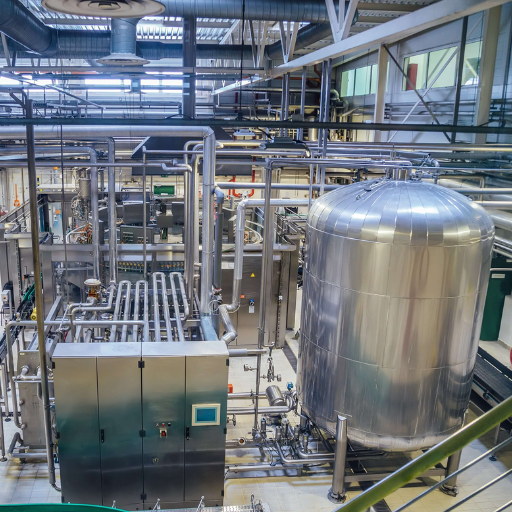
As the name suggests, sanitary filters are cleaning devices created for sensitive working environments that need to eliminate solid, particle, or biological contamination from liquid or gas streams. Such filters are indispensable in the food, beverage, pharmaceutical, and biotechnology industries, where product hygiene and purity are critical. Sanitary filters ensure compliance with stringent health and safety regulations, defend product integrity, and ensure the operational reliability of essential processes.
Defining Sanitary Filters and Their Role in Filtration
Sanitary filters are specifically engineered to withstand strict health and safety standards and are used in industries that require a high standard of cleanliness. These filters are usually made of strong materials, like stainless steel, which is highly resistant to corrosion, thermal stress, and microbial contamination. Advanced filtration media like pleated membranes or sintered metal enhance filtration efficiency, enabling the removal of tiny particles, around 0.1 microns.
A surge in sanitary filter demand from the pharmaceutical industry is expected, owing to the increased production of sterile medications and vaccines. Additionally, the food and beverage industry is experiencing increased sanitary filter demand due to the stringent microbial control needed and the consistency expected of products. By incorporating new design features such as CIP (clean-in-place) and lower pressure drop, makers of these filters ensure they sustain optimal operational efficiency under sterility conditions.
Sanitary filters also aid in maintaining product quality while streamlining processes by reducing maintenance-related downtime. Thus, it adheres to global regulations such as the FDA, EU, and ISO. These filters are key components to achieving stringent accuracy in industrial operations.
Key Components: Filter Element, Gasket, and Sanitary Stainless Steel
- Filter Element
The filter component constitutes the heart of sanitary filters since it establishes the structure’s filtration accuracy and efficiency. Modern filter elements are made of advanced materials like pleated stainless steel mesh or even polymer membranes, as they must endure high pressure and extreme temperatures. These elements possess different micrometer ratings, usually from 0.1 to 5 microns, which guarantees the elimination of microbes, particulates, and impurities. Furthermore, the design of the components allows for flow rate optimization whilst preserving low values for pressure drop, which is crucial for some areas like pharmaceutical manufacturing.
- Gasket
Gaskets ensure the reliable and leak-free closure of a joint between the filter components, especially in cases where fluids or gases are transported across a boundary. Made from selected and some of the best-grade materials like EPDM, PTFE, and silicone, these gaskets have courteous selection to avoid chemical erosions, thermal expansion, and microorganisms. They also adhere to regulations concerning sanitation and safety, including but not limited to FDA 21 CFR and USP Class VI regulations. Well-engineered, the entire gasket reduces the chance of contamination whilst ensuring that sanitary systems operate seamlessly.
- Sanitary Stainless Steel
Preferred for its cleaning, strength, and corrosion resistance, stainless steel 316L is also used in sanitary filters as the structural backbone. Its polished surface finish measuring below 0.8 micrometers Ra smooths potential contamination points. The components made of stainless steel are designed to effortlessly maintain standards set by the Clean-in-Place (CIP) and Sterilize-in-Place (SIP) processes. Furthermore, the grade’s durable nature complies with ISO and ASME BPE requirements and enhances its use for critical sanitary applications. Mitigating the need to disassemble the unit increases convenience while also ensuring disinfection.
How Sanitary Filters Protect Against Contaminants and Microorganisms
Sanitary filters serve as a competent primary barrier to contaminants and microorganisms for critical processes. They are made out of specific highly specialized media such as pleated membranes or sintered stainless steel, which achieve particle retention exceptionally within their industry. For example, some modern filtration systems can function at micron levels of 0.1 µm, which can eliminate organism parts like bacteria and mold. Moreover, it contributes significantly towards meeting international ISO 14644 and EC 1935/2004 standards: these filter systems are bound to operate under stringent safety and hygiene requirements.
Usually, the filtration process consists of several stages, including a pre-filtration stage, which is responsible for eliminating larger particulates, and a fine filtration stage designed to capture microscopic organisms. The latest designs make use of the flow structure with all the advanced dynamics of flow so that the pressure drop and energy demand are within the acceptable range for a given flow rate. In addition, PTFE and PES filter membranes have widespread use due to their unmatched resistance to chemicals and their ability to be sterilized, qualifying them as resilient during rigorous cleaning and sterilization cycles. These technological steps are necessary for the pharmaceutical, biotechnology, and food production industries—where precision and sterility are unforgiving strict criteria.
Types of Sanitary Filters: Which One is Right for Your Application?
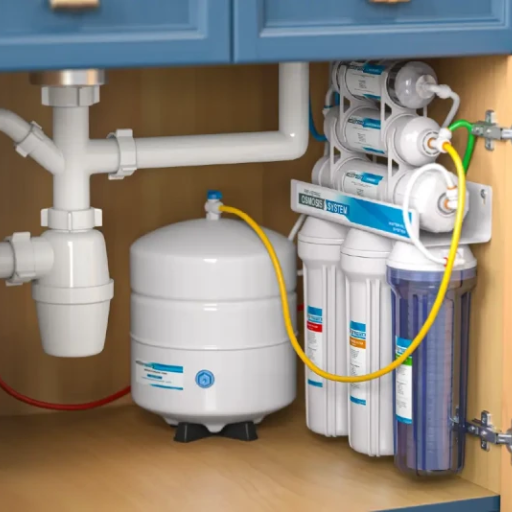
The choice of sanitary filter rests on specific application requirements. Depth filters are best suited for pre-filtration processes requiring high contamination retention and long filter life. Membrane filters are best for critical processes requiring sterile conditions, such as the final filtration of pharmaceutical products. Pleated filters offer an intermediate filtration and flow rate performance and are suitable for varied applications, including food and beverages. To determine your best filter, assess filtration accuracy, flow rate, cleaning, and maintenance procedures.
Cartridge Filters vs. Filter Bags for Sanitary Applications
Sanitary filters serve as a competent primary barrier to contaminants and microorganisms for critical processes. They are made out of specific highly specialized media such as pleated membranes or sintered stainless steel, which achieve particle retention exceptionally within their industry. For example, some modern filtration systems can function at micron levels of 0.1 µm, which can eliminate organism parts like bacteria and mold. Moreover, it contributes significantly towards meeting international ISO 14644 and EC 1935/2004 standards: these filter systems are bound to operate under stringent safety and hygiene requirements.
Usually, the filtration process consists of several stages, including a pre-filtration stage, which is responsible for eliminating larger particulates, and a fine filtration stage designed to capture microscopic organisms. The latest designs make use of the flow structure with all the advanced dynamics of flow so that the pressure drop and energy demand are within the acceptable range for a given flow rate. In addition, PTFE and PES filter membranes have widespread use due to their unmatched resistance to chemicals and ability to be sterilized, qualifying them as resilient during rigorous cleaning and sterilization cycles. These technological steps are necessary for the pharmaceutical, biotechnology, and food production industries—where precision and sterility are unforgiving strict criteria.
The choice of sanitary filter rests on specific application requirements. Depth filters are best suited for pre-filtration processes requiring high contamination retention and long filter life. Membrane filters are best for critical processes requiring sterile conditions, such as the final filtration of pharmaceutical products. Pleated filters offer an intermediate filtration and flow rate performance and are suitable for varied applications, including food and beverages. To determine your best filter, assess filtration accuracy, flow rate, cleaning, and maintenance procedures.
Liquid Filtration vs. Gas and Compressed Air Sanitary Filters
In distinguishing liquid filtration from sanitary filters for gas and compressed air, the most crucial difference is the application and operation of each. Liquid filtration systems are used to remove particulate, sediment, and other types of contamination from liquids. Such systems often utilize membranes, bags, and cartridge filters, which are selected based on required filtration efficiency, pressure, and chemical resistance. Among other parameters, a typical performance of these systems would include flow rate, particle retention size, and operational pressure, which is usually low to moderate for most liquids, depending on viscosity.
In contrast, gas and compressed air sanitary filters are designed to clean air or gas streams by separating oil aerosol, particulates, or water vapor contaminants. These systems use coalescing filters, activated carbon, and fine particle filters capable of providing the required air cleanliness level. The filters are adjustable to some applications, but most are designed to work with considerably higher pressures than liquid systems. In addition, critical parameters are the efficiency of particles removed and measured in microns, the flow rate at measured pressures, and compliance with standards like ISO 8573-1, which defines air quality classes.
Liquid filtration systems are typically evaluated for their ability to maintain fluid purity during food and pharmaceutical processes. In contrast, gas filtration systems focus on providing sterile or contaminant-free air/gas in cleanrooms or pneumatic systems. Both filters are critical for ensuring optimal performance and compliance with strict industry regulations and maintaining safety and efficacy in hygienic processes.
Depth Filters and Other Specialized Sanitary Filter Types
Depth filters enable the retention of contaminants throughout the filter media rather than just the surface. This structure allows depth filters to endure high particle retention and extended flow rates, particularly for applications requiring high-capacity filtration. The multi-layered structure of polypropylene, cellulose, or glass fibers ensures gradient capturing of particulates, microorganisms, and fine particulates.
These filters find application in various industries, such as biopharmaceuticals, where they are used in the pre-filtration of biological fluids and food and beverage production to remove clarity-affecting impurities without compromising quality. Evidence indicates depth filters can retain efficiencies greater than 99% for particles within the specified micron rating, showcasing reliable use in critical applications.
Other specialized sanitary filter types include membrane and pleated filters, which are used for precise microbial and particle removal. Progress in material sciences has enhanced filter design, improving durability and resistance to harsh conditions such as extreme pH and high temperatures. For instance, polyethersulfone (PES) and polytetrafluoroethylene (PTFE) membrane filters provide superior microbial retention and chemical resistance essential for sterile filtration.
Choosing a specific filter type involves critical evaluation of the working parameters, including fluid viscosity, process flow rate, and chemical compatibility, to meet the requirements of industry regulations such as the FDA and ISO. Technological advancements and material innovations benefit sanitary filtration applications by increasing efficiency, performance, and safety.
How Does a Sanitary Filter Work in Various Industries?
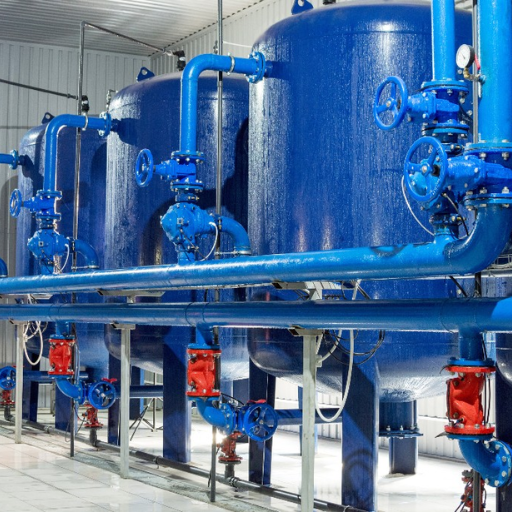
Sanitary filters are critical in the healthcare and food production sectors to ensure high cleanliness levels in air and liquid systems. Within the pharmaceutical sector, sanitary filters sterilize liquids and remove particulates and microorganisms. Additionally, hygienic filters are used in the food industry to prevent contamination during filling and packaging, thus maintaining product hygiene. Biotechnology filters enable processes like cell culture and fermentation by providing necessary sterility. Accomplishing these requires demanding efficiency standards like consistently reliable performance over sterile filtration and meeting industry regulations.
Sanitary Filter Work Principles: Passing Through the Filter
Sanitary filters rely on high-performance filtration media engineered with cutting-edge design principles to enhance contaminant removal at the individual layer level. As fluids such as water, gases, or liquids flow through the structure, they encounter barrier layers designed to trap particles and microorganisms while allowing the valued fluid to flow. These layers include polypropylene, PTFE, or microporous membranes and are guaranteed to claim filtration accuracy of submicron, especially 0.2 microns in sterile environments.
Recent advancements in filtration technology include pleated filter designs that enhance surface area, decrease pressure drops, and extend filter lifespan. Furthermore, systems for the automated monitoring of pressure differentials and flow rates—providing essential information for the system’s proper functioning in real time—solve the dynamic requirements of the automated industrial environment. These improvements have increased operational efficiency by as much as 30%, especially within the pharmaceutical manufacturing and food processing sectors.
Applications in Pharmaceutical and Food Processing Industries
Sanitary filters ensure the highest product quality and safety levels within pharmaceutical and food processing environments. These industries demand precision filtration systems to prevent contamination, maintain product consistency, and adhere to rigorous regulatory standards.
Pharmaceutical Industry
- Sterility Assurance: Sanitary filters such as membrane and depth filters are utilized in media preparation, bioreactor harvesting, and sterile filtration to remove particulate matter, microorganisms, and endotoxins. For instance, membrane filters with pore sizes of 0.2 microns are widely adopted for bacterial retention.
- Validation and Compliance: Filtration systems are validated to meet stringent standards, including USP <1211> guidelines for sterility and biocompatibility. This ensures consistent performance during critical steps like injectable production.
- Biopharmaceutical Manufacturing: Integrated filtration solutions are central to producing vaccines, monoclonal antibodies, and other biologics. They enable scalability while maintaining sterility. These filters are designed to handle protein recovery rates exceeding 95%, optimizing product yields.
Food Processing Industry
- Clarification and Purification: Filters clarify beverages such as wine, beer, and juice, efficiently removing turbidity caused by suspended solids. Research shows that advanced filtration can reduce haze-forming particles by over 80%.
- Microbial Control: High-efficiency filters are critical for dairy processing, such as milk pasteurization, where filters ensure the removal of spoilage organisms while maintaining nutritional properties. Microfiltration methods achieve low bacterial retention rates.
- Regulatory Compliance: Producing ready-to-eat meals or baby foods requires absolute adherence to health standards such as HACCP protocols. Sanitary filters support compliance by robustly removing pathogens like Listeria or E. coli.
Data on Efficiency Gains
- Studies reveal a 25-40% increase in operational efficiency when modern sanitary filters are implemented in large-scale continuous sterilization processes.
- Filtration advancements have reduced product rejection rates to below 2%, directly reducing waste and operational costs.
- Systems designed for high throughput environments can process volumes as high as 1,000 liters per hour without significant pressure drops, optimizing workflow in both sectors.
By leveraging advanced filtration technologies, pharmaceutical and food processing industries achieve a delicate balance between innovation, safety, and efficiency, ensuring the delivery of high-quality end products to consumers worldwide.
Micron Ratings and Filter Materials for Different Requirements
I pay close attention to the application’s specific micron ratings and filtering materials requirements and select the most suitable option. For example, sub-micron (0.2, 0.45 microns) filters with polyethersulfone (PES) or PTFE are optimal for fine filtration due to high chemical compatibility and retention efficiency. For less demanding tasks like filtration, larger micron values (5 to 50 microns) made from polypropylene or nylon are durable enough to withstand high particle loads. Ensuring the micron rating and material correspond with the process guarantees industrial benchmarks are met alongside assured performance.
Sanitary Filter Housing: Materials and Design Considerations

Sanitary filter housings are constructed from stainless steel because of their strong resistance to corrosion, strength, and ability to maintain hygienic parameters. Materials and components of the housings are usually made of 304 and 316L stainless steel, with 316L being the preferred option due to its greater pitting and chemical exposure resistance in harsher applications. Design considerations should include a smooth, polished internal surface free of ledges that would facilitate microbial growth and make cleaning difficult. Compliance with ASME BPE and 3-A Standards also guarantees that the housing fulfills the industry standards for cleanliness and safety. Other characteristics, such as clamps or tri-clamp fittings, facilitate quick disassembly for cleaning without meticulous attention to detail, aiding in keeping the equipment clean.
316L vs. 304 Stainless Steel Material for Sanitary Requirements
The main distinguishing factor between 316L and 304 stainless steel is their composition, which impacts their performance in a hygienic environment. Both belong to the austenitic stainless steels that exhibit high resistance to corrosion and good mechanical strength. The difference in composition arises because 316L contains molybdenum (2-3%), making it more resistant to pitting and crevice corrosion in chloride-rich environments. Due to this, 316L is widely accepted for use in harsh and acidic cleaning solutions, which is often the case in the pharmaceutical, food, and beverage industries.
Used in practical applications, 316L stainless steel has a lower carbon content than its 316 and 304 counterparts, reducing carbide precipitation during welding. This characteristic enables the retention of corrosion resistance in heat-affected zones; therefore, 316L is best for welded fabricated equipment.
On the other hand, 304 stainless steel is cheaper and adequate for less critical corrosive environments. While it meets basic sanitary requirements, it may degrade faster in aggressive cleaning or saline environments.
The pitting resistance equivalent number (PREN) of 316L surpasses 304, showing 316L’s capability to endure harsher operational environments. More so, 316L’s adherence to stringent regulations such as ASME BPE, FDA, and 3-A establishes its use for high-purity systems. Thus, the choice between 316L and 304 largely depends on the application’s cleanability and operational parameters.
Sanitary Filter Housing Types and Contact Surfaces
Sanitary filter housings are used in sensitive industries such as pharmaceuticals, food and beverage, and biotechnology because of the rigorous hygiene and operational standards they maintain. Because of their corrosion resistance and cleanliness, stainless steel grades like 316L are typically selected. These housings come in single and multi-round configurations to accommodate different flow rates and batch sizes.
The surfaces inside these housings must be smooth enough to prevent contamination and friction. For these sanitary applications, the surface finish is typically specified as 15-20 microinches Ra or better. Several methods can improve this, one being graduated mechanical polishing followed by electropolishing as applicable to smoother surfaces and passive films. These wetted surfaces must also comply with 3-A sanitary standards or ASME BPE standards for compatibility with sterilization-in-place (SIP) and cleaning-in-place (CIP) procedures.
Additional ergonomic features, such as crevice-free welds and FDA-approved elastomeric seals, boost functionality by minimizing microbial growth and making maintenance easier. Combining precise engineering with regulatory compliance ensures sanitary filter housings’ operational efficiency and product safety in demanding applications.
Working Pressure Considerations and Corrosion Resistance
Choosing sanitary filter housings requires serious consideration for operational systems due to working pressure and material toughness, which are crucial parameters affecting safety and efficiency. Modern sanitary filter housings can sustain pressure from 150 PSI to 300 PSI, depending on processes and construction material. For high-pressure applications, stainless steel, mostly 304 or 316L, is the most used material due to its high tensile strength, excellent corrosion resistance, and compliance with industrial standards.
The material used also needs to be helpful in the housing’s surroundings. In cases where aggressive chemicals are used to clean the filters, these surfaces need to be cleaned without the help of operators for prolonged periods. Stainless steel, mainly 316L, is the best choice because of improved pitting and crevice corrosion resistance in pharmaceuticals, biotech, foods, and beverages. Passivation Surface Treatment makes this stronger by putting an oxide layer on the housing, gaining more excellent operation time under stringent parameters. These policies ensure that the designed structures are Architectural и Industrial Filters that clean coarse contamination while keeping the housing intact under severe industrial conditions.
3-A Sanitary Standards: What You Need to Know
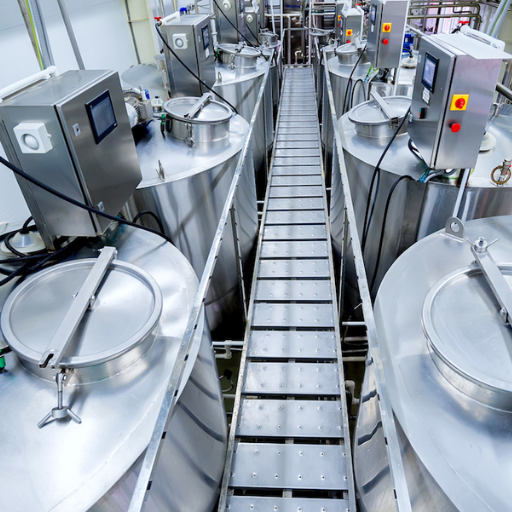
3-A Sanitary Standards are guidelines to ensure proper fabrication of dairy and food industry equipment. They enhance the sanitary design of tools used for fabrication, increasing cleanability, sanitization, and product safety while minimizing contamination risks. Compliance with 3-A standards often requires stainless steel and other materials and smooth, simple surfaces that are easy to clean. Independently certified equipment meets 3-A Standards, which certifies that it is clean and functioning hygienically. Maintenance of these standards alongside regulation helps aid quality and protect consumers effectively.
What 3-A Sanitary Standards Specify for Filtration Equipment
Equipment under the 3-A sanitary standards must meet strict filtration design and operational criteria to process food, beverages, and pharmaceuticals safely. Using non-toxic, durable materials is mandatory; strong 316-grade stainless steel, highly resistant to corrosion, is suitable for both low and high-pH environments. Furthermore, all product contact surfaces must be smooth and devoid of clefts that provide niches for microbes, with a polish not rougher than 32 Ra (roughness average) to enable clean-in-place (CIP) systems.
Design specifications also highlight the need to prevent contamination risks. Filters must maintain adequate seals to avoid bypass scenarios where unfiltered material could blend with the filtered product. Gasket and seal components must also meet hygienic grade standards and be compatible with repetitive cleaning-chemical cycles, elevated temperatures, and pressure variations.
In addition, the standards require that filtration equipment be configured for periodic inspection and maintenance while functioning within designated performance parameters. Equipment features must provide value during operational load conditions. Pressure-rated designs are required, and some form of testing after equipment installation is recommended to ensure structural integrity and equipment functionality as operational standards were verified.
Certification Process for Sanitary Filters
For certification to commence, manufacturers need to provide proof their filters respond to claims made against them by ASME or 3-A sanitary standards scrolls assessments for filter material construction and filters’ compatibility with hygienic applications. Compliance elements include using FDA-sanitized filter components, which are contended to undergo invasion forces of corrosion, temperature extremes, and aggressive chemicals.
Moreover, performance testing, such as bacterial retention testing, particle challenge testing, and flow rate measurement, confirms filtration efficiency. For example, ASTM bacterial retention tests provide information about filters’ quantitative capabilities to retain microorganisms under specific conditions. The filters are often tested for CIP (cleaning-in-place) and SIP (sterilization-in-place) compatibility to ensure repeated steam sterilization cycles do not compromise structural integrity.
Traceability and documentation are essential in certification. This entails providing the validation scheme, materials certificate, and all documented steps taken to assure product quality. Active participation in periodic audits and even re-certification can be part of the set standards to control the fulfillment of the latest set of industrial requirements.
Industry Standards and Compliance for Food and Beverage Applications
Strict safety, quality, and customer reliability standards characterize the food and beverage sector. Various legislative acts support it, such as The Food and Drug Administration (FDA) on Food Safety Modernization Act (FSMA) in the United States and ISO 22000, an International Standard for Food Safety Management. These primary compliance frameworks set the boundaries for compliance as fulfillment must meet the requirements of HACCP (Hazard Analysis and Critical Control Points) and Traceability System.
Along these lines, 3-A Sanitary Standards deal more with the design and construction of elements of sanitary equipment for food use from microbial contamination or dirt, thus preventing unsanitary conditions. Compliance with these guidelines often includes documented validation testing, risk assessments on a microbiological level, and food contact-grade materials such as stainless steel grade 316L or polymers compliant with FDA standards.
Emerging industry trends include sophisticated analytic tools like real-time monitoring sensors and automated traceability systems, which provide continuous, precise data on processing conditions in compliance with supporting standards. According to the last industry analytic reports, such innovations are expected to create demand in the Global Food Safety Testing Market, which is highly anticipated to blossom due to advancements in rapid microbiological testing and additional regulatory requirements.
Neglecting these standards can have serious repercussions, such as incurring fines, recalling products, and causing detrimental impacts to brand image. Hence, the food and beverage industry maintains safety and effectiveness by integrating compliance frameworks into strong quality control systems alongside continuous employee training.
Maintenance and Cleaning of Sanitary Filters
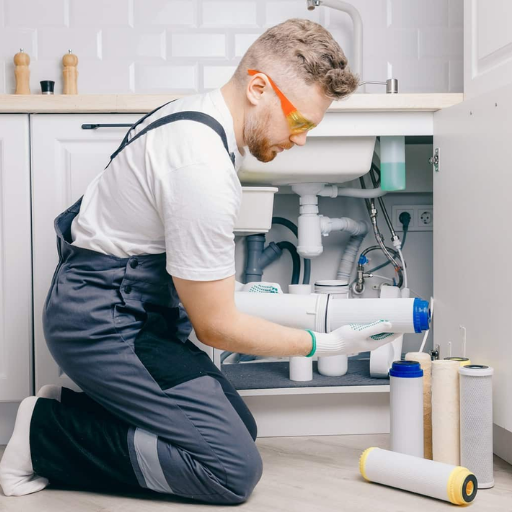
Sanitary filters require consistent maintenance and cleaning to maintain peak functionality and hygiene. They must be checked periodically for signs of physical damage, clogging, and wear and tear. The schedules and methods provided by the cleaning guidelines are to be followed strictly as supplied by the manufacturer.
Sanitary filters are often cleaned by reverse flushing, which removes built-up debris, biofilm, and other unwanted contamination using approved cleaning agents. Thorough rinsing with potable water to remove unwanted chemical residues is critical post-cleaning. Routine validation of cleaning procedures comprises active replacement of worn or damaged filters and routine washing to modernize food safety and compliance standards.
How to Properly Disassemble and Clean Sanitary Filter Housings
To clean and properly disinfect the sanitary filter housing, I ensure the system is under no pressure and locked out to avoid any leaks or exposure during maintenance. During the cleaning process, I carefully follow the order of steps provided by the manufacturer to avoid damaging the filter element with the housing components, the gaskets, and the O-rings. After removing all parts, I scrub each part with approved sanitizing agents mixed with potable water to remove some parts, biofilm, and residue. After all parts have been cleaned and rinsed, I inspect all pieces for signs of wear or damage, replacing any gaskets that are needed before reassembling the entire housing, aiming to achieve a proper seal without over-torquing the bolts, ensuring they work effectively. Lastly, I carry out all other intended checks to ensure that performance is achievable for optimal results before operation.
Ensuring Cleanliness and Hygiene in Sanitary Filter Systems
To uphold the operational efficiency of sanitary filter systems, their cleanliness is maintained through well-defined intervals and specific system protocols. Studies indicate alignment between cleaning intervals and system type, operational load, and contaminant characteristics. For example, filters with a high particulate or bioactive load best suit daily cleaning cycles to stave off clogging and microbial growth. In addition, using validated cleaning techniques, such as Clean-in-Place (CIP) systems, improves cleaning efficiencies by controlling flow rates, temperatures, concentration of cleaning agents, and thus manual labor and system downtime. Industry benchmarks suggest applying heat to cleaning solutions, which are optimized between 140°F and 185°F, enhancing the breakdown of organic and inorganic residues while inhibiting microbial proliferation. Following these guidelines assures compliance with health and safety regulations while extending the filter component’s lifespan.
Replacement Schedules for Filter Cartridges and Elements
Maintaining a well-documented proactive replacement schedule for filter cartridges and elements is critical for optimal performance and adherence to operational standards. System operating conditions, many contaminants, flow rates, and the type of filter media dictate the replacement intervals. Industry standards often suggest that filter elements be assessed for low-demand systems every 3 to 6 months. In high-demand applications, evaluation may be required every 4 to 8 weeks.
Research indicates that standard filter cartridges have an average lifespan of 12 to 24 months under normal subject to operational conditions. Environments that include high particulate loads or more complex contaminants may require replacing filters sooner—every 6 to 12 months—to avoid system inefficiencies and expensive downtimes. Change in differential pressure across the filter is vital; manufacturers advise replacement after exceeding the baseline differential pressure of 10-15 PSI.
Specific protocols defined by regulatory agencies like the FDA, EPA, or their regional counterparts must be followed for specialized filters applied in sterile processing or chemical manufacturing. Following the published lifecycle documentation ensures that filtration effectiveness is maintained, contamination hazards are minimized, and risks about mechanical failure due to overuse are minimized. Documenting replacement histories along with key performance indicators (KPIs) supports maintenance forecasting, thereby improving filter management from a technological perspective.
Reference Sources
-
Filson Filters
- Sanitary Filters Overview
This source provides detailed information on the applications and types of sanitary filters, particularly in industries like food, beverage, and pharmaceuticals.
- Sanitary Filters Overview
-
Sanitek Filter
- What Is a Sanitary Filter Housing And How Does It Work?
This article explains sanitary filter housings’ working principles and benefits, including lenticular filters.
- What Is a Sanitary Filter Housing And How Does It Work?
-
ScienceDirect
- Drinking Water Treatment by Multistage Filtration
This research focuses on dynamic gravel filters and their role in water treatment, which can be relevant to understanding filtration technologies.
- Drinking Water Treatment by Multistage Filtration
Frequently Asked Questions
Q: What is a 3-A Sanitary Filter Housing?
A: A 3-A Sanitary Filter Housing is a filter certified to sanitary standards. It is designed specifically for applications requiring stringent hygiene, such as the food and beverage and pharmaceutical industries. These housings are certified to 3-A, ensuring they meet high cleanliness and construction standards.
Q: Why is it essential for a filter to be certified to 3-A standards?
A: Filters certified to 3-A standards are crucial because they ensure the filter is designed and manufactured to inhibit the growth of bacteria, making them suitable for sanitary applications. This certification is fundamental in sensitive industries like food and beverage and pharmaceutical manufacturing.
Q: What are the benefits of using a stainless steel sanitary filter?
A: Stainless steel sanitary filters are durable and corrosion-resistant, making them ideal for filtering air, liquids, and gases. They are also easy to clean and maintain, essential for ensuring hygiene and preventing contamination.
Q: How does a sanitary filter inhibit the growth of bacteria?
A: Sanitary filters use materials and designs that inhibit bacteria growth by minimizing areas where bacteria can accumulate. The smooth surfaces and sanitary construction prevent particles in the air and other contaminants from adhering and multiplying.
Q: What types of sanitary filter housings are available?
A: Sanitary filter housings are available in different sizes and configurations to suit various applications. They can filter air, liquids, and gases and are often equipped with features like a valve or a vent filter to optimize performance.
Q: What applications require the use of sanitary filters?
A: Sanitary filters are used in applications that require high levels of cleanliness and contamination control, such as food and beverage processing, pharmaceutical manufacturing, and other industries where filtering air and liquids is critical.
Q: Can sanitary filters be removed for cleaning?
A: Yes, sanitary filters are designed to be easily removed for cleaning. This ensures they effectively filter contaminants and maintain the hygiene standards in premier hygienic applications.
Q: What is the role of an air filter in a sanitary filter housing?
A: An air filter in a sanitary filter housing is crucial for filtering air and preventing particles from entering the system. This helps maintain the purity of the environment and the materials being processed.
Q: How does the use of a vent filter benefit sanitary applications?
A: A vent filter allows airflow while preventing contaminants from entering the system. This is particularly important in a sanitary tank to maintain the integrity of the contents and ensure compliance with hygienic standards.
Q: What does it mean when a filter displays the 3-A symbol?
A: When a filter displays the 3-A symbol, it indicates that it meets the rigorous hygiene and construction standards set by the 3-A Sanitary Standards organization. This symbol is a mark of quality, ensuring the filter is suitable for sanitary applications.

